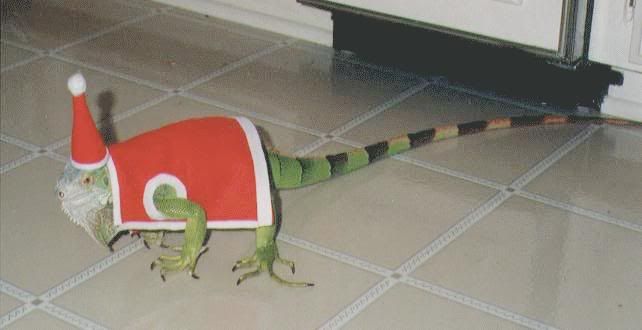On the Birds and Bees, Plants and 150 ton Sauropods
Merry Christmas, everyone!
I'm off to romp around in the snow... but before I go, I thought I'd reprint a little essay I wrote back in the day when I was a young wannabe Paleontology student. I usually dust a version of this thing off every year and make a story out of it for the kiddies.
Yeah, I'm a dork.
On Birds and Bees, Plants and 150 ton Sauropods
Evolution's a funny thing. Like crop circles and Seurat paintings, it reveals itself only when you step way back and look at the generalities. Up close, cracks start to appear, but - taken as an overall, evolution teaches us a lot of fascinating lessons about how we can look at the world. It works really well if we have a unbroken fossil record (for the most part) over 150 million years long.
150 million years ago, the flora did not look like it does today. That probably seems obvious, but the differences were huge. There were no flowers. There was no fruit. No berries. No oaks, no elms, no hardwood trees, really. Nothing we could call a crop plant. No real bushes. Fact is, if you look outside your window, 99% of the plants you see did not exist at that time. And, I don't mean that particular bush you're looking at wasn't there - I mean that bush's entire family didn't exist.
What did exist were mainly softwood ground plants. Some just happen to be tall enough that you could call them trees, 'cept they weren't. Just big-ass ferns, really. Swampy plants. Cycads, Ginkos, Scrub, Vines, Pines, etc. You've probably seen recreations. It's all pretty uniform and uncreative, plant-wise, but then again, plants were just starting out. We'll cut 'em some slack.
But about 75 million years ago, that suddenly changed. And by "suddenly" I mean to say almost overnight, evolutionarily speaking. After this great awakening, pine cones started to make room for fruit. Flowers shared space with the ground scrub. Different trees started to create new forests. What happened? What forced plants to so dramatically change in such a short period of time?
(You people who know me already know what my next word is going to be...)

Dinosaurs!
See, the period we're talking about here is the Mid-Jurassic, which is the era of big dinosaurs. Dinosaurs in general are pretty big, I know - but this was the age of the giants. These dinosaurs were massive. Never before or since did this planet have such a vast amount of the largest animals ever - the sauropods.
Sauropods are those huge four-legged, long tail, long necked, little head plant eaters. Brachiosaurs and the like. You know that seen in Jurassic Park where they come over the hill and see that huge animal for the first time eating leaves from the treetops? The one that sneezed on the kid later in the movie? Brachiosaur. Nothing has ever been bigger.
(One particular fossil we've found was reconstructed into a critter well over 130 feet long. 130 feet. Imagine that. A creature that would be cramped in a football field. It was named Seismosaurus, because surely, when it walked, the earth quaked.)

Having so many huge herbivores lumbering around made it a bad time to be a plant. Epically when your means of reproducing was basically wind-driven and sporadic (hah! pun!) at best. Something had to be done to ensure new plants were coming along faster than the old plants were getting gobbled up. A new method of reproduction had to happen.
Hey! If you can't beat 'em, join 'em! Why not make the critters work for us? Soon, seeds were stored in fruit and offered to the giants who could (ahem) deposit them in new places. About this time burrs and sticky seeds started to appear. And, why just pick on the big guys? There are insects, too! Flowers began cropping up everywhere.
The landscape changed. By the end of the dinosaurs age (they still have another 75 million or so to go) plain, swampy greens and browns were replaced colorful fields and exotic flowers. Forests changed, too - trees became sturdier to better withstand the giants within. It must've been like when Dorothy landed in Oz and film changed to color. Except, it... um.. took longer.
So, while you're enjoying your Christmas Poinsettia, garnishing with cranberries, enjoying your fruit-of-the-month-club gift membership your aunt Petunia sent you, or - heck - munching on your fruitcake this holiday season - be sure to take the time to give a little thanks to our favorite big-ass four legged herbivores - the Sauropods!

Have a good holiday, everyone. May you find your lives immersed with the season.




2 comments:
Ahhh...nice article. Where oh where would we be without Angiosperms?
Awww ... The little Santa Iguana is just too cute for words. :-)
Hope you had a Merry Christmas and Happy New Year, Soup!
Post a Comment